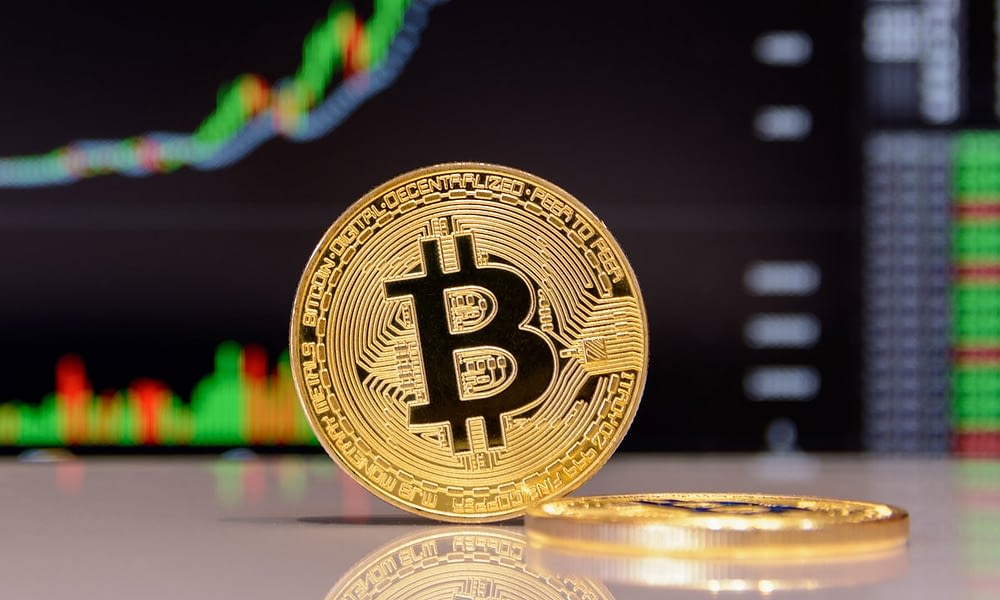Binance Sees Surge in Bitcoin Inflows, Potential Price Impact Looms
26.07.2024 22:00 1 min. read Alexander Stefanov
Recent on-chain data reveals a significant uptick in Bitcoin inflows to the Binance exchange over the past 24 hours, hinting that Bitcoin’s recent price drop could continue.
CryptoQuant’s Maartunn highlighted a key trend in Binance’s Bitcoin netflow on X. This metric, which measures the difference between Bitcoin inflows and outflows on an exchange, has recently turned positive for Binance.
Netflow on Binance (inflow minus outflow) is heavily positive in the most recent hours.
Hmm 🧐 https://t.co/NAJVZ8bfuO pic.twitter.com/jhXQj5HHNr
— Maartunn (@JA_Maartun) July 25, 2024
A positive netflow indicates more Bitcoin is entering the exchange than leaving.
Typically, high net inflows can be bearish for Bitcoin, as they often signal that investors are preparing to sell. Conversely, negative netflow would suggest withdrawals, which are generally considered bullish as it implies that investors are holding onto their coins.
The data shows that despite a recent drop in Bitcoin’s price, Binance has experienced consistent positive net inflows. This trend has persisted even as the price decline seemed to stabilize, with inflow spikes suggesting continued deposits by large holders, potentially signaling a forthcoming sell-off.
Bitcoin has seen some recovery since these large inflows began, indicating that the whales may not have yet started selling. It remains uncertain whether these deposits will result in further price declines or if they serve a different purpose.
-
1
Elon Musk Unveils His Own ‘America Party,’ Signals Pro-Bitcoin Political Shift
07.07.2025 11:40 2 min. read -
2
Bitcoin Blasts Past $121,000 as Institutions Fuel Rally—Will Altcoins Follow?
14.07.2025 8:15 2 min. read -
3
Bitcoin: What to Expect After Hitting a New All-time High
10.07.2025 14:00 2 min. read -
4
Peter Brandt Issues Cautious Bitcoin Warning Despite Bullish Positioning
10.07.2025 20:00 2 min. read -
5
Vanguard Now Owns 8% of Michael Saylor’s Strategy, Despite Calling BTC ‘Worthless’
15.07.2025 17:09 2 min. read
Global Money Flow Rising: Bitcoin Price Mirrors Every Move
Bitcoin is once again mirroring global liquidity trends—and that could have major implications in the days ahead.
What is The Market Mood Right Now? A Look at Crypto Sentiment And Signals
The crypto market is showing signs of cautious optimism. While prices remain elevated, sentiment indicators and trading activity suggest investors are stepping back to reassess risks rather than diving in further.
What Price Bitcoin Could Reach If ETF Demand Grows, According to Citi
Citigroup analysts say the key to Bitcoin’s future isn’t mining cycles or halving math—it’s ETF inflows.
Is Bitcoin’s Summer Slowdown a Buying Opportunity?
Bitcoin may be entering a typical summer correction phase, according to a July 25 report by crypto financial services firm Matrixport.
-
1
Elon Musk Unveils His Own ‘America Party,’ Signals Pro-Bitcoin Political Shift
07.07.2025 11:40 2 min. read -
2
Bitcoin Blasts Past $121,000 as Institutions Fuel Rally—Will Altcoins Follow?
14.07.2025 8:15 2 min. read -
3
Bitcoin: What to Expect After Hitting a New All-time High
10.07.2025 14:00 2 min. read -
4
Peter Brandt Issues Cautious Bitcoin Warning Despite Bullish Positioning
10.07.2025 20:00 2 min. read -
5
Vanguard Now Owns 8% of Michael Saylor’s Strategy, Despite Calling BTC ‘Worthless’
15.07.2025 17:09 2 min. read


